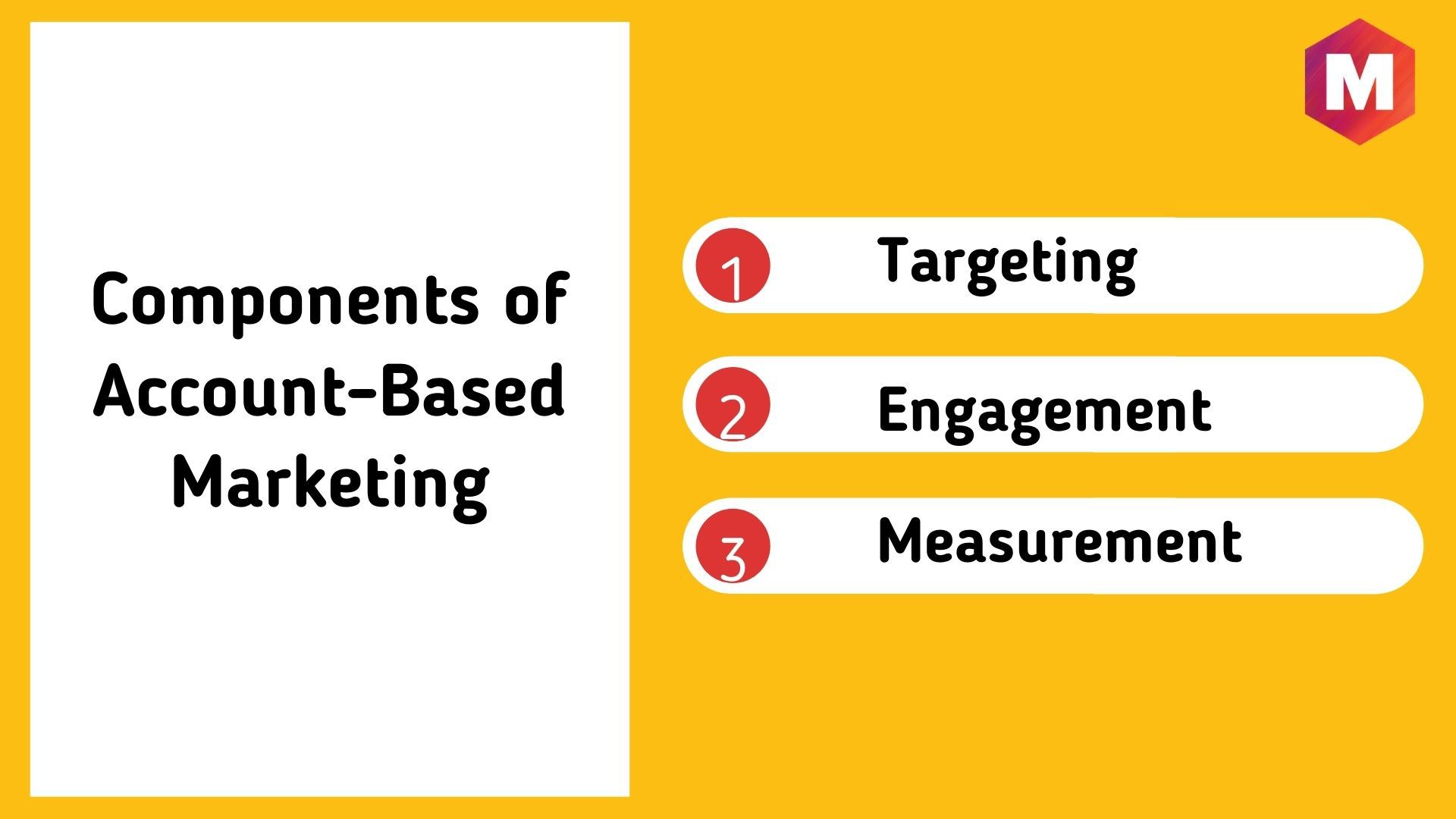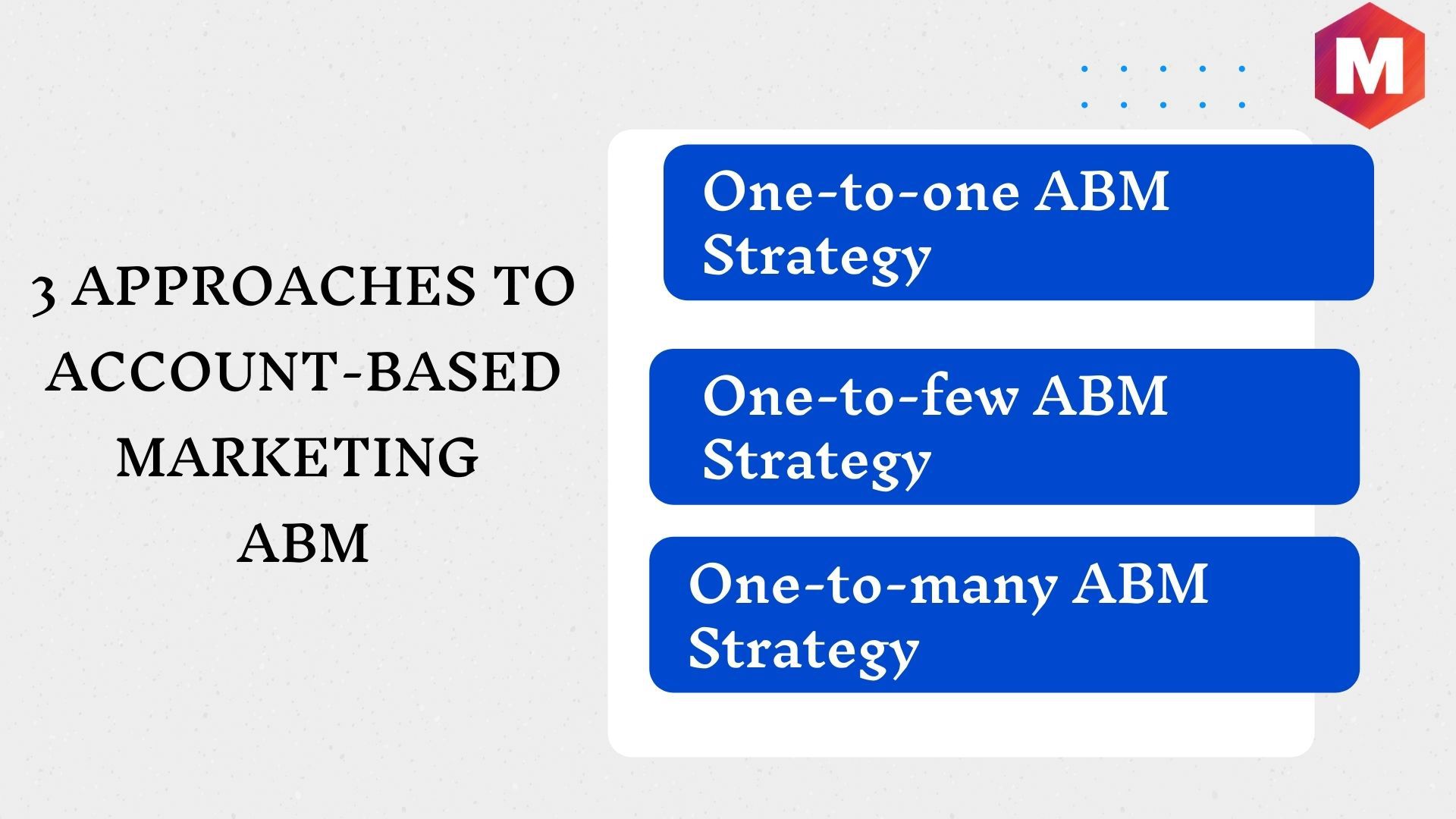ABM is a well-targeted marketing strategy in which the Marketing and Sales team align and collaborate for ensuring personalized, engaging, and delightful buying experiences for mutually-identified high-value target accounts.
Accounts based marketing empowers businesses to connect and communicate with high-value accounts in a way like they themselves are the individual market. The account-based approach revolves around customizing the buyer journey by personalizing all content, communications, and campaigns to those specific target accounts for optimizing marketing and sales.
This ensures optimized ROI as well as the loyalty of the customers. Let us dive deeper into the world of account-based marketing and understand how it helps the marketing and sales team.
Table of Contents
What is ABM Account-based Marketing?
Accounts-based marketing is a form of a marketing strategy that focuses on winning particular high-value accounts by using good targets and highly personalized campaigns.
According to the Information Technology Services Marketing Association (ITSMA), Accounts-based marketing has a holistic approach. It does not rely upon the campaigns that are usually created for the whole market, but individual target accounts with their markets and rights to optimize marketing and sales conversions.
It is a strategic marketing and sales strategy where key target accounts are marketed directly by identifying high-value accounts and key stakeholders via various Sales and Marketing channels to appeal to their particular needs and personas.
In the words of Elyse Flynn Meyer, President, and founder of Prism Global Marketing Solutions-
Account-based marketing focuses on a few large and important accounts or those potential accounts that hold the greatest promise of adding to your bottom line. That’s why it’s so critical to have a high-touch and highly targeted message to these individuals, because of their revenue potential and impact on sales and marketing.
So, Account-based approaches are quite productive to target accounts that can optimize ROI for the business. Let us now understand who should opt for the account(s) based marketing-
Who should use the Account-Based Approach of ABM?
ABM usually focuses on the Business to Business (B2B) approach.
The companies whose main aim is to earn the highest ROI, have to give special attention to the high-value accounts and mend their strategies to reach their desired goals.
ABM (Accounts-based marketing) is very different as it acknowledges different point of views of all the people of each account. It is highly efficient and eliminates the problem of inbound marketing sales. It focuses on relation-building and quality research.
It helps you to understand the needs of the target accounts and individually work on that.
Components of Account-Based Marketing
Marketing and sales teams use to convert High-value accounts via an ABM strategy.
When you target accounts via ABM, it gets channelized via its three components – targeting, engagement, and measurement-
1. Account-based Targeting
In ABM Account-based marketing, you can explore the side of technology and management and target accounts that you know are worth the time and are in high ROI. The kind of target accounts you want to convert and have already targeted highly depends on the organization you run and the kind of importance you give to strategic goals.
2. Account-based Engagement
Accounts-based marketing is the solution to run two (or more) marketing channels together. It also lays a foundation to deliver good, well-informed cross-channel campaigns to the target accounts you have targeted.
3. Account-based Measurement
The strategy that you create for your Accounts-based marketing and sales should be measurable. This helps you to improve your performance over time by determining your success at every step. To make things easy for yourself, you should build a dashboard to find the specific accounts, analyze your revenue, targets, etc.
Accounts-based Marketing ABM vs Inbound Marketing
Accounts-based marketing and sales are generally for enterprise deals, whereas inbound marketing is for small and medium-sized businesses.
Account-based sales and marketing turn the inbound marketing funnel upside down. Here are some key points you should consider –
- Highly targeted marketing to target accounts
- The main focus of accounts based marketing is on accounts and not industries or markets.
- Account-based marketing campaigns target customers as well as prospects.
Whereas inbound sales and marketing focus on –
- Markets and industries
- Focuses on the quantity and not the quality
- The research tool focuses on the buyer persona.
Account-based marketing is generally for enterprise deals, whereas inbound marketing is for small and medium-sized businesses. Account-based marketing turns the inbound marketing funnel upside down.
ABM or accounts based marketing helps you connect to a larger audience and focus on the accounts that help you receive a high Return on Investment.
85% of marketers say that Account-based marketing provides the highest return than other markets. It is highly efficient and eliminates the problem of inbound marketing. It focuses on relation-building and quality research.
It helps you to understand the needs of the targeted accounts and individually work on that.
How does ABM work?
Accounts-based marketing is not a solo act. It would be best if you have marketing and sales teams to make relevant marketing tactics to run it.
ABM is successful because of the coordination and cooperation that you can see in marketing teams when they work together by making specific marketing tactics for the key accounts. The best Accounts based marketing practice is its multi-channel implementation via sales and marketing teams.
You should coordinate your campaign with the channel owners and all the people who connect the channels.
Here are a few positions you should consider while creating your marketing team to make account specific ABM strategies for key accounts –
- Head of ABM
- Integrated Campaign manager
- Webinar and content manager
- Digital marketing manager
- B2B Marketers
- Marketing operations
- Field marketers
- Sales manager
They should work together to incorporate best practices to align sales funnel and demand generation for converting ideal customers via personalized campaigns and ABM efforts.
Why is Account-based marketing important?
The companies are trying to target the large accounts and the benefits of account-based ABM sales and marketing revolve around that only. Marketing and sales teams use account-based approaches to optimize conversions. Some of the notable benefits of ABM or account-based strategies are-
1. Personalized marketing approach
Marketing and sales teams create personalized messaging for the targeted account and tailor their creative assets according to the customer’s need.
2. Sales and management alignment
Accounts-based marketing account allows the sales and marketing teams to work in unity. They together work on identifying the targeted account, crafting campaigns.
3. Shorter sale cycles
When an organization takes some major decision related to purchasing, it involves many stakeholders, resulting in slowing down the process of sales. But the case is different in ABM based marketing account practices. It shortens the sale cycle because all prospects are simultaneously nurtured.
4. Clearer return of investment
Account-based marketing strategy is very precise and well as measurable. It provides the highest ROI. 85% of marketers say that marketing account-based provides the highest return than other markets.
5. Fewer wasted resources
Time and resources are saved in the marketing account-based. Because of this, the resources which are wasted previously frees up.
How does ABM work?
Here are the steps to implement the ABM or account-based strategy for targeting high-value account
1. Identify the target accounts that will provide you with high ROI
For the implementation of the ABM (account-based) strategy, decision-makers should find out their target account(s) that can optimize marketing sales and conversions.
2. Conduct good and informative research
Marketing and sales decision-makers should make their ABM strategy by doing proper research of the target account.
3. Develop your marketing campaigns
In this step of ABM strategy, Sales and Marketing decision-makers develop their campaigns considering specific requirements of target account(s).
4. Once developed, start running your campaigns
Once you have made the plans for targeting a specific account, you should start to channelize your ABM campaigns.
5. Start measuring the customized campaigns
For ensuring the success of your ABM campaigns, you should measure the conversions of your ABM strategy to see if your high-value account is being converted or not.
3 approaches to Account-based Marketing ABM
Information Technology Services Marketing Association (ITSMA) states three approaches to Account-based marketing that marketers are using since the time it has been introduced in the year 2000.
1. One-to-one ABM Strategy
As the name says, the marketing focuses on a small number of individuals for channelizing the ABM campaigns.
2. One-to-few ABM Strategy
At this level, the marketing focuses on the few accounts that have similar attributes. Such ABM strategies are crucial in converting more high-value account(s).
3. One-to-many ABM Strategy
In this ABM strategy, the focus is high on many accounts that increase the scale of the campaign. This account-based approach to marketing is effective in optimizing sales.
Examples of Account-based Marketing
Your approach towards a particular account depends upon the attributes of the account, segments, and the marketing channels. The segments that you choose can add a lot of value to your organization.
Here are a few examples that can be used for the development of ABM campaigns –
1. Events
This is one of the best opportunities for sales teams to turn the decision-makers to make the right decision. ABM strategies are quite effective in converting specific audiences via such events.
2. Webinars
Just like events, Account-based marketing ABM can focus on targeting the accounts through webinars by creating unique content. Marketing efforts of such an ABM program need well-made personalized content.
3. Direct mail
This has become a popular way to approach the targeted accounts. Gifts sent through direct mail helps in increasing the chances of higher ROI. It is used in digital marketing and lead generation sorts of marketing efforts.
4. Email marketing
This is one of the most valuable marketing channels for Account-based marketing. This involves the organization to draft emails for each company personally. Marketing teams can use such an ABM program for lead generation.
5. Paid advertisements
Ads and social media are the most common ways to reach out to targeted accounts. Social media platforms like Facebook and LinkedIn let you target specific companies by using technology. Decision-makers within an organization can use it for short as well as long term goals.
ABM Tools
There are so many tools for ABM that best fit for channelizing and measuring it. These ABM tools can help you execute the personalized campaign but nothing can beat your campaign’s personal touch.
It s important to remember that you are selling your campaign to people and not to prospects or acronyms. The best selling technique for the ABM program is the human touch with the right balance of technology. Let us now have a look at some best-fit ABM tools that can help marketing teams in targeting account-
- Marketing automation
- General account-based platforms
- Email marketing
- Content marketing
- Personalization
- Tech retargeting
- Predictive analytics
- Marketing and sales intelligence
These tools can help you execute personalized ABM campaigns for targeting high-value account(s) via best-fit ABM plans. The audience looks for the right interaction and less towards the fancy things you put up to sell your campaign.
The more you interact with your customer and use the right words, the more they will take a keen interest in your campaign, turning them from visitors to revenue-generating long-term accounts, which will help you get higher ROI for your ABM campaigns.
Conclusion!
By targeting the right audience with good, personalized messages from the account owner, you can turn these visitors into revenue-generating accounts.
ABM does not rely on the campaigns that are usually created for the whole market, but individual accounts with their markets and rights. It usually focuses on the Business to Business (B2B marketing) approach.
The companies whose main aim is to earn the highest ROI, have to give special attention to the high-value accounts and mend their B2B marketing strategies to reach their desired goals. Your approach towards a particular account depends upon the attributes of the account, segments, and the marketing channels. The segments that you choose can add a lot of value to your organization.
ABM is not a solo act. It would help if you had a team to run it. Account-based marketing is successful because of the coordination and cooperation that you can see in marketing.
The best ABM practice is multi-channel. You should coordinate your campaign with the channel owners and all the people who connect the channels.
Liked this post? Check out the complete series on Marketing



Dear sir
I am a srilankan citizen . I have been working in a F M C G company for the last 23 years. now I am heading more than 230 sales peoples your site is very important for all marketing and sales relevant person .anyone can understand you have explained very simply. wish you all the best .